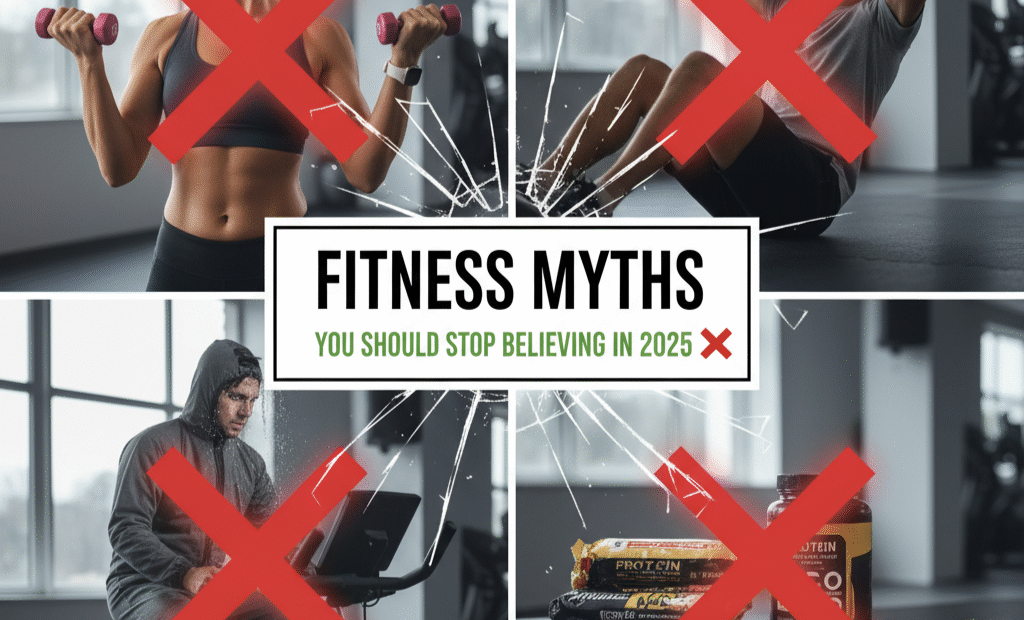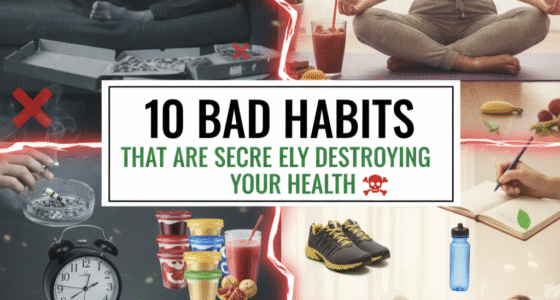Every year, fitness trends spread across social media with bold promises. Some are helpful, but many are outdated or just plain wrong. In 2025, it’s time to clear up the confusion. Believing fitness myths not only slows progress but can also lead to injuries, wasted effort, and frustration. Below, we’ll cover the most common myths you should finally drop this year — and what to do instead.
Myth 1: Spot Reduction Works
Why people believe it
Doing crunches burns your abs, so it feels like belly fat should melt away.
The truth
Fat loss doesn’t happen locally. Your body loses fat systemically based on energy balance, genetics, and hormones — not the specific muscle you train.
What to do instead
Focus on overall calorie balance, strength training, and whole-body workouts. Crunches strengthen your abs, but fat reduction comes from consistent diet and training.
Myth 2: Cardio Is the Only Way to Lose Weight
Why people believe it
Cardio burns visible calories, making it feel like the main path to weight loss.
The truth
Cardio is helpful, but strength training is just as important. Without resistance training, you risk losing muscle mass and slowing metabolism.
What to do instead
Mix cardio with progressive resistance training. This preserves muscle, improves body composition, and makes long-term fat loss easier.
Myth 3: Lifting Makes Women Bulky
Why people believe it
Media and marketing exaggerate the effects of lifting on women’s physiques.
The truth
Most women lack the testosterone needed to build extreme muscle mass. Strength training shapes the body, improves metabolism, and increases confidence without “bulking up.”
What to do instead
Incorporate strength sessions 2–4 times a week. Use progressive overload for healthy, toned results.
Myth 4: No Pain, No Gain
Why people believe it
People confuse sharp pain with productive effort.
The truth
Hard work should feel challenging, not injurious. Sharp or lingering pain signals overload or bad form.
What to do instead
Push yourself gradually. Learn to separate effort discomfort from harmful pain. Prioritize form over ego-lifting.
Myth 5: You Must Work Out Every Day
Why people believe it
Consistency is marketed as “never missing a day,” making people think rest equals weakness.
The truth
Muscles need recovery time to grow stronger. Overtraining leads to fatigue, injuries, and plateaus.
What to do instead
Train 3–5 days per week with planned rest days. Recovery is where adaptation happens.
Myth 6: Supplements Are Essential
Why people believe it
Advertisements often portray powders and pills as shortcuts to results.
The truth
Supplements can help fill gaps, but they are not necessary if your diet is balanced. Whole foods remain the foundation of health.
What to do instead
Use supplements strategically (protein powder, vitamin D, creatine) only when diet or lifestyle requires. Don’t rely on them as a magic fix.
Myth 7: Sweating More Means You Burn More Calories
Why people believe it
Sweat feels like visible evidence of effort and calorie burn.
The truth
Sweat is your body’s cooling mechanism, not a calorie counter. Some people sweat less but burn more calories depending on intensity and genetics.
What to do instead
Measure progress with performance, energy, and consistency, not sweat levels.
Final Thoughts
Fitness in 2025 is more evidence-based than ever. Don’t let old myths shape your workouts. Train smart, eat well, recover properly, and stay consistent. The truth is: success in fitness is about sustainable habits, not shortcuts or outdated advice.
“Strong habits, not strong myths, build lasting results.”









